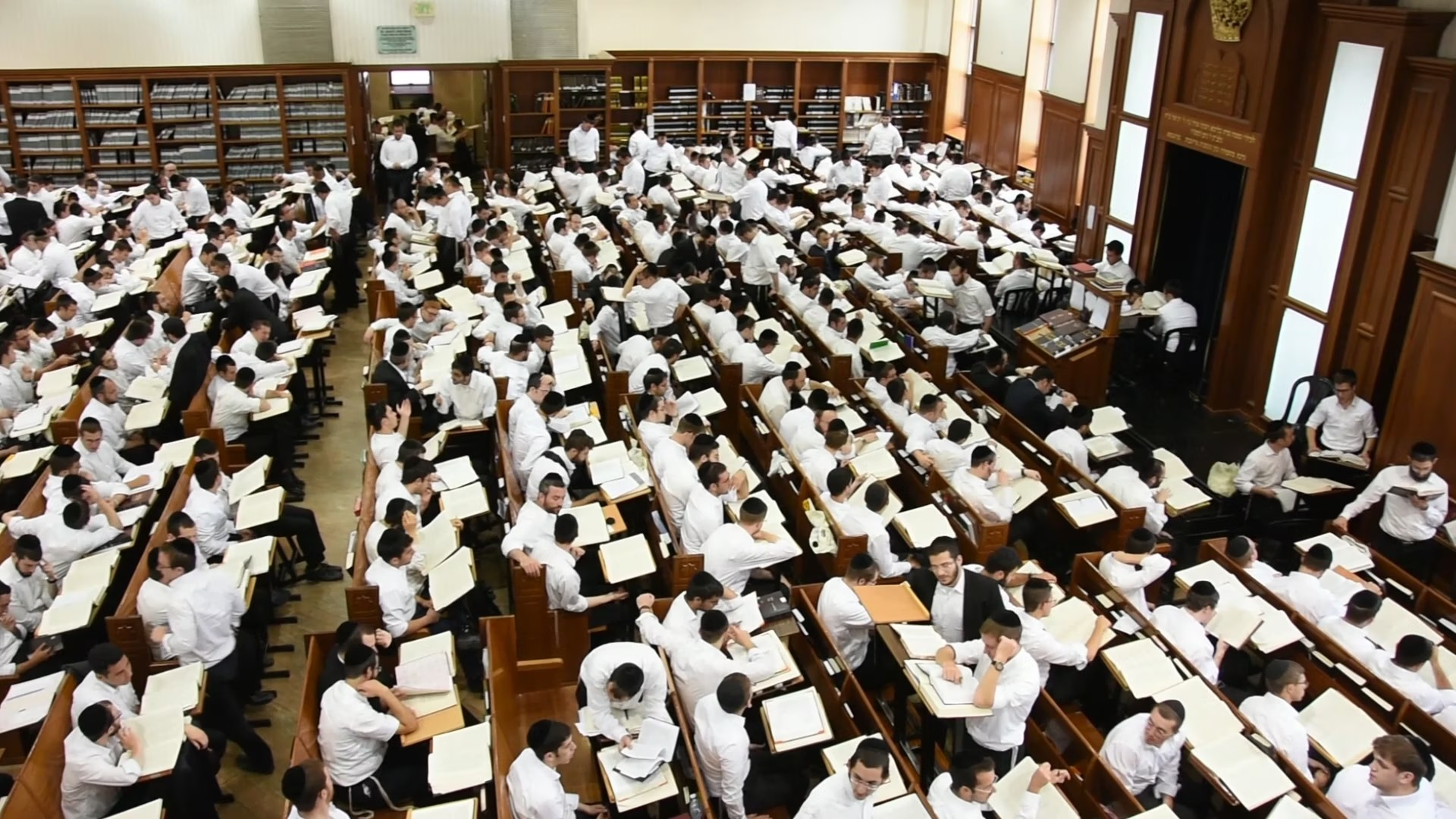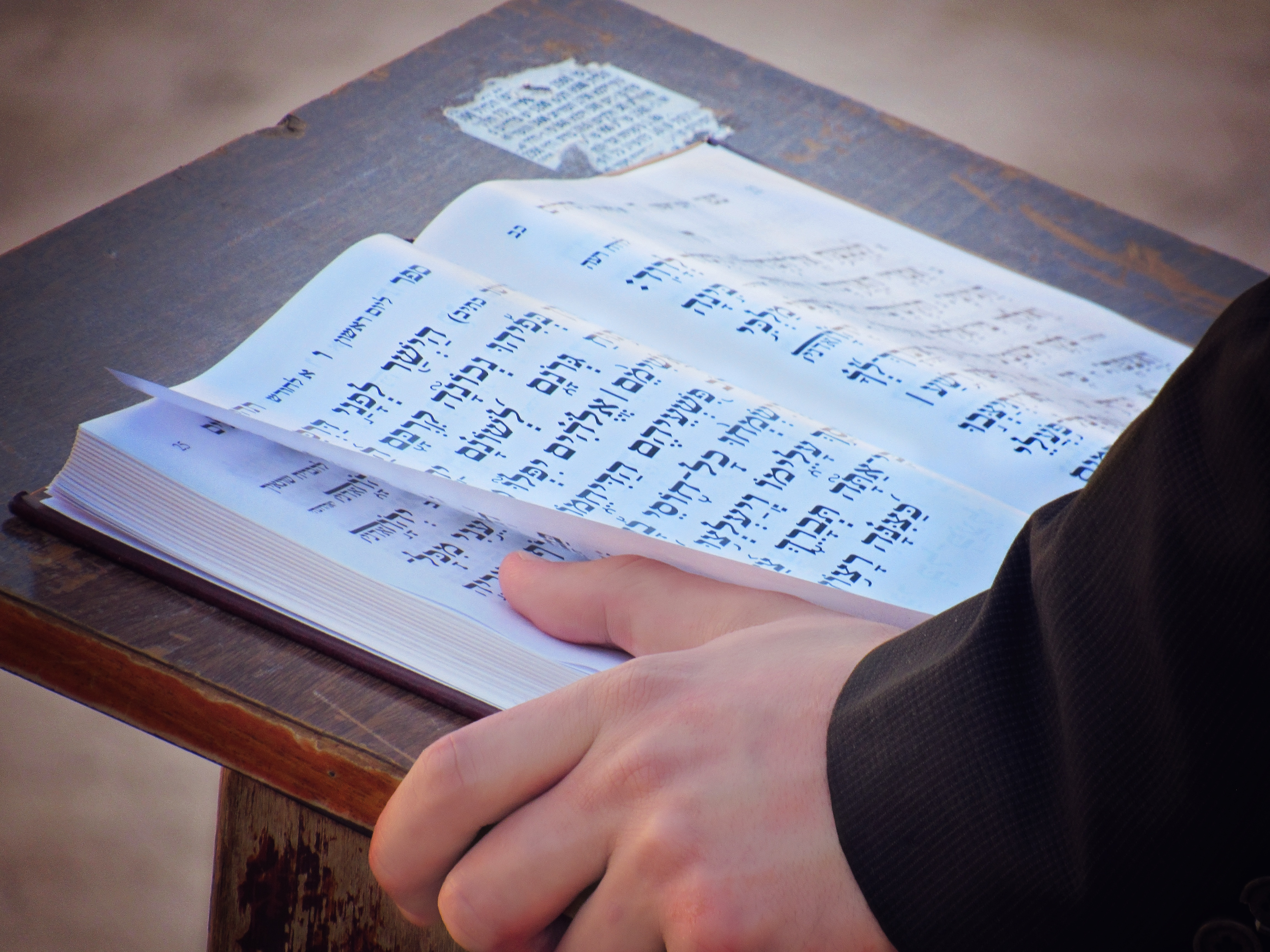Dwelling in the Sukkah
The Gemara (Sukkah 26a) derives from the passuk, …בסוכות תשבו that a person should dwell in his sukkah for the seven days of Yom Tov just as one dwells in his house all year – but it goes both ways, writes the Satmar Rebbe, Rav Yoel Teitelbaum: A person must always remember to dwell in his house with the same kedushah, the same holiness and respectful attitude that he has while living in his sukkah. Just as he dwells in the shelter of faith for seven days, he must incor-porate faith and emunah in his home throughout the year.2
Ushpizin
Due to the tremendous distraction of scores of people knocking on his door day and night, seeking all sorts of spiritual guidance and important needs, the great Rav Pinchas of Koritz finally prayed to Hashem that he should become unpopular. In his mind that would be the solution; people would no longer disturb him, and he would be free to serve Hashem with all his energy and undi-vided attention. Indeed, it would seem that his wish had come true, for after that time, R’ Pinchas was never seen in the company of another individual. He lived in the most austere fashion and secluded himself for lone communion with Hashem.
When the Yom Tov of Sukkos approached, he could not find another Jew to help him build his sukkah and had no choice but to ask a gentile to do the chore. Likewise, after davening the first night of Yom Tov, R’ Pinchas asked various people to be his guests in honor of Yom Tov, but not a single one would accept his invitation—he was just too disliked! R’ Pinchas walked home alone. As he arrived, he began to recite the tefillah upon entering the sukkah, followed by the traditional invitation to the first of the Ushpizin. Just then, he looked up and saw an old man standing just outside the door of the sukkah. The old man, however, who R’ Pinchas instantly recognized to be Avraham Avinu, would not step foot into the sukkah. R’ Pinchas tried to convince him to enter but to no avail.
Distressed, R’ Pinchas turned to him and asked in anguish, “Why do you not enter my sukkah? What is my sin?” The old man stroked his white beard and looked hard at R’ Pinchas. “It is not my custom to enter a place where there is no hachnasas orchim,”(Hospitality) said Avraham Avinu. R’ Pinchas Koritzer now understood his mistake and from that day forward, sincerely prayed to the Al-mighty that he be restored in the eyes of his townspeople to his former situation. And indeed, he was once again able to find favor in the eyes of men.2
Thinking About Others
On Sukkos, we are commanded to leave our permanent dwelling and enter a temporary dwelling. This is to help us continue our upward climb in spirituality that began on the first day of Elul, through Rosh Hashanah and Yom Kippur, and escalates with the beautiful Yom Tov of Sukkos. There is so much meaning and deep understanding in everything we do on Sukkos, from
the lulav, esrog, hadassim, and aravos to the Ushpizin who come to visit us each night. But the significance of the sukkah itself is surely of paramount importance and has much to teach us.
According to Rav Avraham Pam, the “permanent dwelling” of a person is his own mind! Human nature is to be self-centered. One’s thoughts largely revolve around his own needs. This is what is most “permanent” in a human being. Of course, one also thinks about others – about Chesed – but that is the “temporary dwelling” of the mind! The fundamental mitzvah on Sukkos is ושמחת ם to be happy! For this reason, Sukkos is called Zman Simchaseinu, the time of our rejoicing.
R’ Pam explains that thinking of other’s needs is the formula for a life of simcha! Thus, on Sukkos we leave our “permanent dwellings,” our self-centered thoughts, and enter our “temporary dwelling,” focusing on the needs of others. As R’ Pam often quoted, “The city of happiness that we’re all looking for can only be found in the state of mind!”
The sukkah also represents humility and the need for a person to be yielding and relin-quishing in the way he deals with others. From the halachic requirements of the sukkah, we can derive the meaning of the sukkah. ideally, one’s sukkah should have four walls. However, if he can’t manage that, three walls are sufficient. And if he is unable to build three walls, that too is not a problem! Even a sukkah comprised of two walls and a tefach (handbreadth) is still kosher. It’s all about flexibility and compromise. The Vilna Gaon zt”l famously writes that the ס (samach) of the word סכה (sukkah) represents all four walls. The כ (kuf) comes second, for this alludes to three walls. And the ה (hey) symbolizes the two walls with an additional piece! May we take the lessons of compromise and reconciliation to heart and may the joy of this beautiful Yom Tov permeate our entire lives3
Seize the Moment
There was once a Jewish innkeeper who provided food and lodgings for weary travelers. Though he was friendly and personable, his jealous competitors decided to slander him. Before long, he was ordered to appear in court to defend himself against the baseless charges. The simple innkeeper was terrified about his fate, for he was told that if convicted, he could face a long jail sentence or possibly even execution. One friend advised him to schedule an appearance before the emperor, who was a benevolent monarch and would no doubt exonerate the innkeeper if he were told the truth. But the poor man argued and said that he had no connections to the palace and no way to even arrange an appointment.
The emperor had a habit from time to time to dress up as a peasant and mingle with his subjects to get to know them. One night, he even came to the inn, where the kind innkeeper served him food and drink and made him comfortable. The innkeeper had no idea he was actually serving the emperor. Later, when the innkeeper realized that his guest had been the emperor himself, he was truly distraught over the missed opportunity to plead his case and free himself.
When we sit in our sukkah, the Shechinah rests among us and this gives us the opportunity to draw close to Hashem and plead for the things we need in life. The Chafetz Chaim advises us to seize the moment and not waste our precious time, for when else will we have this incredible opportunity to sit with the King of all kings in a personal setting, in our very own sukkah?
The Sukkah
In the Yehi Ratzon prayer, we pray that Hashem protect us – מזרם וממטר from storm and from (harsh) rain. The gematria of the word זרם is 247, while that of the word מטר is 249. With this, explains, Rav Avraham Twerski, we can understand the pasuk in the Torah, “Lo sosifu al hadavar…V’lo sigri’u – Do not add to the words (of the Torah) and do not subtract from it” (Devarim 4:2). Since there are 248 positive commandments, we find that זרם is one less (247), and זרם is one more (249). Thus, we pray that the sukkah, which represents the manifestation of the Shechinah (Divine Spirit), should protect Bnei Yisrael from ומטר זרם – any addition or subtraction of the mitzvos, which may cause a withdrawal of Hashem’s presence from amongst His people, resulting in a lack of unity and a destructive force of separation.4
The Esrog
Why is such eminence ascribed to the Lulav? Why is the Lulav so paramount? After all, according to Chazal, the Esrog represents the Tzaddik, the wholly righteous person, who is re-splendent in both good deeds and Torah learning. Yet, surprisingly, the Beracha that is recited focuses entirely on the Lulav, “Al Netilas Lulav.” Furthermore, it is the Lulav and the accompa-nying Hadas and Arava that are held in the right hand, a symbol of stature and veneration. The Lulav and Hadas represent the Jew who is a work in progress. He still has to work on his character traits and interpersonal relations or hasn’t performed the Mitzvos up to par. The Arava personifies the Jew who is totally derelict- he hasn’t learned Torah, nor has he been kind to others. Astound-ingly, the Esrog, the Tzaddik, is relegated to the left hand!
Why is the Esrog so seemingly mistreated? I would like to share with you an answer I heard from Rav Yitzchok Fingerer: the Kesav Sofer that upon taking the Esrog, the beautiful Jew, and unifying it with the Lulav, Hadas, and Arava, the other types of Jews, the other Jews are now ignited and inspired. They want to do Teshuvah. They want to learn. They want to grow. They want to change. The Kesav Sofer explains that the other Jews who are transformed by the Esrog, those who were unaffiliated or needed Chizuk, are considered even holier than the Esrog, the perfect Tzaddik. The power of Teshuvah elevated the other Jews to such great heights. It is for this reason that they are the focus of the Beracha and are held in the right hand. Those who return spiritually are considered even holier than the Esrog that impacted them.
Pri Etz Hadar
“Pri Etz Hadar- a beautiful fruit from the tree” is the way the Torah refers to the Esrog. The Gemara identifies this fruit as the Esrog. Why does the Torah conceal the identity of this special fruit? Why not explicitly state what type of fruit it is? Rav Yitzchok Fingerer explains: It could be that the reason why the Esrog has total anonymity, just being referred to as a beautiful fruit, is because the esrog represents the Tzaddik, and many times we really do not know who the tzaddik really is. Just as the Tzaddik is anonymous and hidden so is the identity of the Esrog. It could be that this is the reason why one Tanna suggests that the Eitz Hadaas, the Tree of Knowledge, is the Esrog tree. The Esrog represents the Tzaddik who engages in internal battles, avoiding sin and temptation – that is why he can’t necessarily be detected. The Eitz Hadaas represented the inner turmoil of the Yetzer Hara, which is what the Esrog, or the Tzaddik is able to overcome.
Lulav
Each seasonal mitzvah brought Rav Nosson Tzvi Finkel, Rosh Yeshivah of Yeshivas Mir Yerushalayim, great excitement. Before Succos, his children would bring him several lulavim and esrogim to choose from. “His esrog had to be perfectly clean,” recalls his son, Rav Shaya. “But his dikduk (meticulousness) in mitzvos did not stem from anxiety, but out of love for Hashem’s mitz-vos.”
A story illustrates Rav Shaya’s point. One year, Yom Kippur fell on a Thursday. Hudi, a talmid from America, went away for the Shabbos between Yom Kippur and Succos, leaving a lulav he had purchased near his bed in the dormitory. He returned to find his bedding askew – and that his lulav had become passul (invalid).”What happened to my bed?” Hudi asked his roommate, not wanting to confront him about the lulav. “Oh, my friend came for Shabbos and needed a place to sleep,” the roommate replied nonchalantly. “I figured you wouldn’t mind …” Hudi was very perturbed, and he expressed his frustration to Rav Nosson Tzvi. “Lots of people bring me lulavim because they want me to use their lulav,” Rav Nosson Tzvi replied. “Come to my house later and choose a lulav from my collection.”
Later that day, Hudi went to Rav Nosson Tzvi’s home and found several beautiful lulavim on the table. He chose one and then asked Rav Nosson Tzvi how much it cost. Rav Nosson Tzvi would not take the full price, insisting that Hudi pay him the price he had paid for his first lulav – which was less than half the value of this lulav! “But I’m doing this on one condition,” Rav Nosson Tzvi said. “You can’t bear a grudge against your roommate.” Hudi agreed and went back to yeshi-vah elated at the thought of using this beautiful lulav on Succos. Only later did he find out that the Rosh Yeshivah had not had any extra lulavim. He had asked family members to put all their lula-vim on the table, and then made sure that each one had a lulav – besides him. He was punctilious in his mitzvah observance because he loved all mitzvos – and the mitzvah of promoting peace in the yeshivah was as important as the others.5
A Private Meal
The Midrash uses a beautiful analogy to explain the significance of Shemini Atzeres. A king proclaimed a festival for seven days and invited all his subjects to the seven-day feast. When the seven days of feasting were over, he said to his close friend, “for seven days I have given the people of my country their due. Let us know relax and enjoy a meal together just you and me.” During the seven days of Sukkos, seventy sacrifices were offered in the Beis HaMikdash on behalf of the seventy nations of the world. On the eighth day, Hashem says to Bnei Yisroel, “Bring just one offering for Me. I want to enjoy this eighth day only with Yisroel, My closest friend.” (Mid-rash Rabbah)6
Choson Torah
Every year on Simchas Torah Rabbi Akiva Eiger was honored with Choson Torah. As he left the bimah one year after reading the Torah, he commented, “Oy Vay! For Forty Years I have been Chassan Torah, and I still do not know the kallah Torah.”







